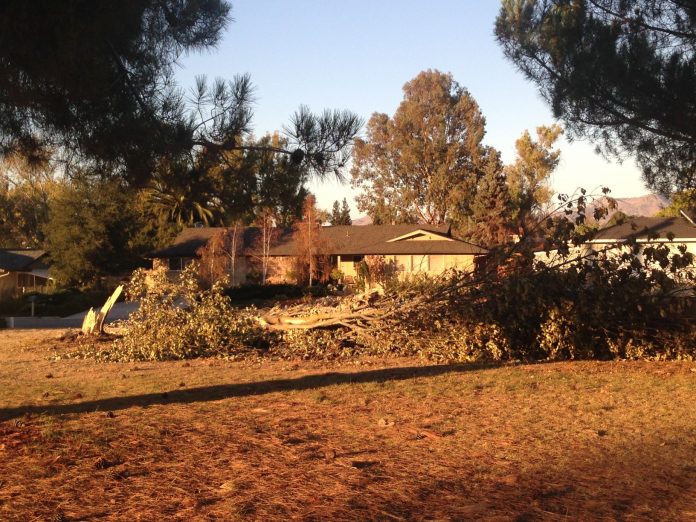It’s nice to imagine that county supervisors took an environmentally friendly approach to regulating the treatment of trees when they recently approved a strict ordinance on the matter. That is not the case, however, as the new rules are not meant to protect the environment’s health.
Approving an updated tree ordinance was about pandering to some of this county’s richest, most influential residents in the Ridgemark gated community who were ghastly concerned about losing the views they enjoyed while living next to a golf course for many years.
Those residents have been embroiled in a legal battle with owners of the Ridgemark Golf & Country Club. The Ridgemark Homes Association filed a lawsuit in April against JMK Golf LLC—the company that acquired the country club property in the spring of 2009 after prior shareholders, largely homeowners, went into bankruptcy proceedings—asking for a restraining order that would keep the company from cutting down trees within view of their houses. The 125 trees in question were in the fallow part of the course, which employees stopped watering in July when Ridgemark closed some of its fairways and moved from 36 holes to 18 holes.
In response to the legal battle, supervisors in the fall approved a 45-day moratorium against cutting mature trees and then another 10-month extension. The ordinance they approved last month extends the tree-cutting ban through 2020 and lays out a series of guidelines and exemptions as they relate to cutting mature trees.
Such bold action from supervisors begs the question: Why is the county developing an ordinance that is meant to address an issue in just one geographic area, while that same ordinance could cause inconveniences for residents in other areas?
The truth is, the so-called environmental issue became a political wedge during Supervisor Jerry Muenzer’s reelection campaign, and most other board members—with the exception of Margie Barrios—have jumped on the bandwagon.
On a broader level, the board is pandering to the many movers and shakers who live in Ridgemark and remain upset about losing trees planted on someone else’s property.
The reality is that the neighboring homeowners don’t own the Ridgemark golf course property. Additionally, there was never a guarantee that the land would remain a golfing property. That’s part of a free market system. Golf is in decline. Therefore, the owner wants to find other ways to make income from his investment. It’s simple business, which many of the Ridgemark residents should understand keenly.
With Ridgemark community property values potentially at stake, in the end, the residents behind the tree ordinance were worried largely about their own economic interests. And county supervisors answered the disingenuous call.
76.1
F
Hollister
July 26, 2024








